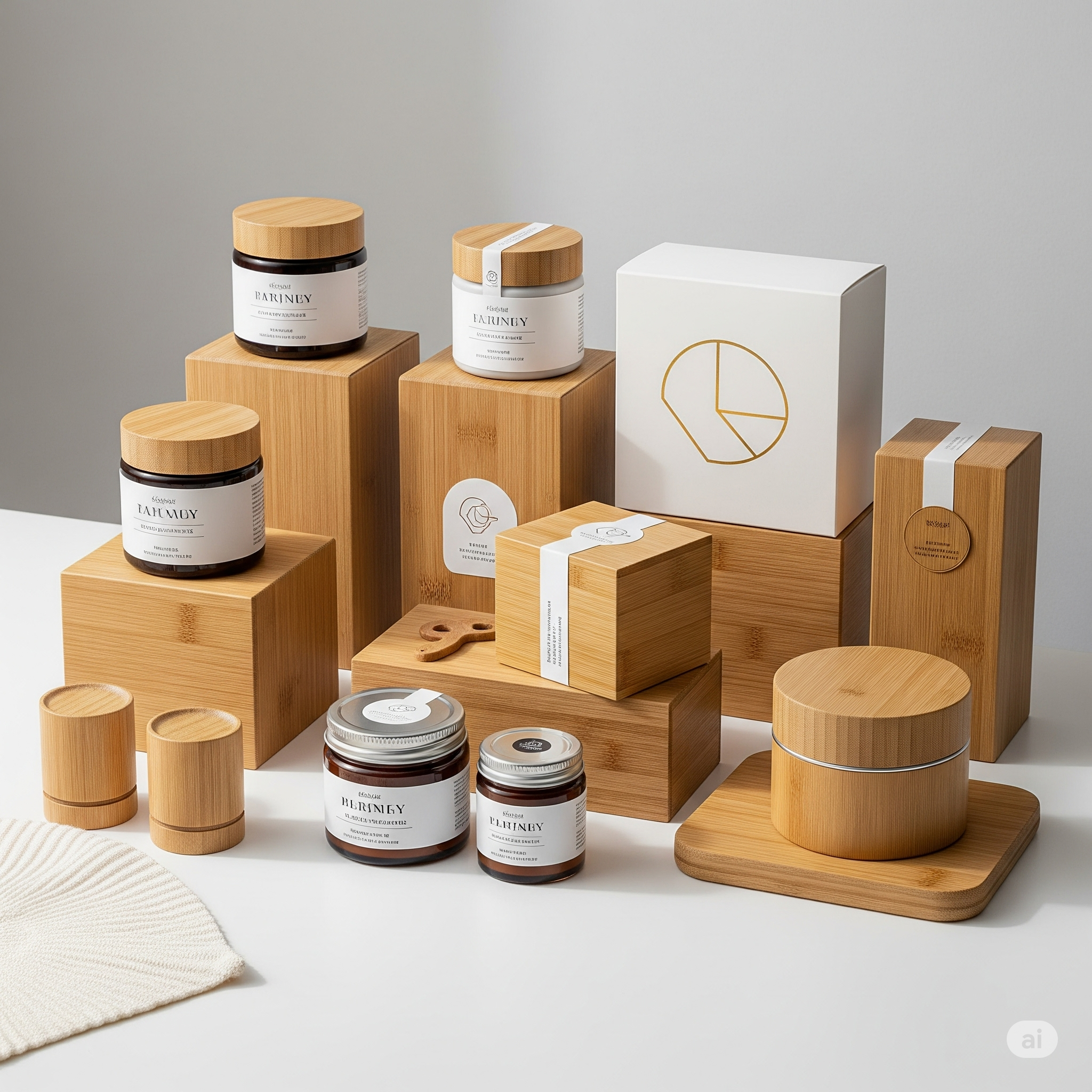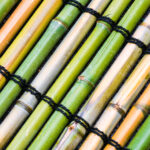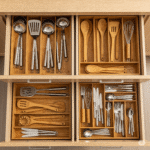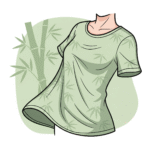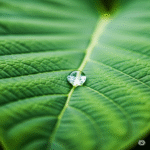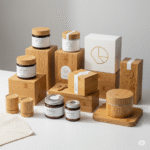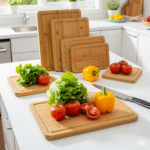Have you ever stopped to think about this staggering fact? Nearly every single piece of plastic ever created still exists on our planet today. From the highest mountains to the deepest oceans, our world is choking on plastic waste. It’s a problem that feels overwhelming, but what if one of the oldest plants on Earth holds the key to a cleaner future?
For decades, we’ve relied on plastic for its convenience. But that convenience has a high price: overflowing landfills, polluted waterways, and harmful microplastics finding their way into our food and water. The challenge is immense, but the solution might be simpler—and greener—than we think. Enter bamboo, a true sustainable superhero ready to take on the plastic predicament.
This blog post will explore how bamboo packaging is rapidly becoming more than just a trend; it’s a powerful and practical solution that is reshaping the future of sustainable packaging for the better.
Why Bamboo? Understanding its Sustainable Superpowers
So, what makes bamboo so special? It’s not just a plant; it’s a powerhouse of sustainability. Its natural properties make it almost perfectly designed to be an alternative to plastic.
Rapid Renewability
Bamboo is officially the fastest-growing plant on Earth. Some species can grow up to three feet in a single day! Unlike trees, which can take decades to mature, a bamboo stalk is ready to harvest in just three to five years. And here’s the best part: when you harvest bamboo, you don’t kill the plant. The root system remains intact and simply sends up new shoots. This means it doesn’t need to be replanted, and it can be harvested year after year, making it an incredibly renewable resource. It also requires very little water and grows happily without any pesticides or chemical fertilizers.
Biodegradability & Compostability
This is where bamboo truly shines. Unlike plastic, which sticks around for hundreds of years, bamboo packaging is fully biodegradable. This means that, over time, it will naturally break down and return to the earth without leaving any toxic chemicals behind. Even better, much of it is compostable, meaning it can be placed in a home or industrial compost bin to decompose and turn into nutrient-rich soil. This closes the loop, turning waste back into something valuable for the planet.
Strength-to-Weight Ratio
Don’t let its natural appearance fool you; bamboo is incredibly strong. In fact, it has a higher tensile strength than some types of steel. This makes it durable enough to protect products during shipping and handling. At the same time, it’s remarkably lightweight, which can help reduce the weight of packages and, in turn, lower the carbon footprint of shipping. Its natural fibers also provide excellent shock absorption, keeping your items safe and sound.
Carbon Sequestration
While it’s growing, bamboo does something amazing for our climate. Like all plants, it breathes in carbon dioxide ()—a major greenhouse gas—and releases oxygen. But bamboo is a champion at it. A forest of bamboo can absorb significantly more and produce about 35% more oxygen than a similar-sized stand of trees. By choosing bamboo, we support the growth of forests that are actively helping to clean our air and fight climate change.
The Rise of Bamboo Packaging: Current Trends in 2025
It’s clear that bamboo is a fantastic material, and right now, in 2025, we’re seeing it pop up everywhere. This isn’t just a fluke; it’s a response to a massive shift in how we think about the products we buy.
Consumer Demand for Sustainable Options
Today’s shoppers are more informed and environmentally conscious than ever before. People are actively looking for brands that share their values, and they are willing to choose an eco-friendly product over a conventional one. This wave of sustainable consumerism is a powerful force, pushing companies to ditch plastic and embrace alternatives like bamboo.
Industry Adoption Across Sectors
Brands are listening to their customers. From small startups to major corporations, companies across many industries are making the switch to bamboo packaging.
- Cosmetics & Personal Care: You can now find beautiful bamboo packaging for lotions, lipsticks, powders, and creams. It gives these products a natural, luxurious feel.
- Food & Beverage: Bamboo is perfect for takeaway containers, disposable cutlery, coffee cups, and even straws. It’s a safe and sturdy alternative for on-the-go meals.
- E-commerce & Retail: The world of online shopping is going green. Companies are using bamboo-based mailers, boxes, and protective inserts to make green e-commerce a reality.
- Fashion & Apparel: Clothing brands are using bamboo for hang tags, boxes, and other packaging to align their products with a more sustainable image.
Technological Advancements in Bamboo Processing
We’re also getting smarter about how we use bamboo. Modern technology allows us to process bamboo fibers in new and exciting ways. We can now mold bamboo pulp into custom shapes to perfectly cradle electronics or cosmetics. We’re also developing better natural coatings to improve bamboo’s barrier properties, making it even safer and more effective for food packaging alternatives.
Types of Bamboo Packaging and Their Applications
Bamboo is incredibly versatile. It’s not a one-size-fits-all solution; it can be transformed into many different types of packaging for various needs.
Molded Bamboo Pulp
Imagine the material used for egg cartons, but made from bamboo. This is molded pulp. Bamboo fibers are mixed with water to create a slurry, which is then pressed into a specific shape and dried. It’s perfect for creating protective inserts for electronics, wine bottles, and cosmetics.
- Applications: Protective inserts, end caps, food trays, drink holders.
Bamboo Paper & Cardboard
Just like wood, bamboo can be processed into pulp to create paper and cardboard. This bamboo paper is strong, durable, and has a smooth finish, making it great for printing. It’s an excellent, sustainable alternative to traditional paper products.
- Applications: Retail boxes, shopping bags, mailers, labels, hang tags.
Bamboo Fiber Composites
This is where innovation gets really interesting. Bamboo fibers can be mixed with other biodegradable materials (like cornstarch) to create a strong, durable composite material. This material can be molded into solid, reusable containers, caps, and closures.
- Applications: Reusable coffee cups, sturdy cosmetic jars, lids, and closures.
Whole Bamboo Products
Sometimes, the simplest solution is the best. Some brands use whole stalks of bamboo, cut to size, as unique and beautiful containers. This approach creates a high-end, natural aesthetic that is perfect for gift items or luxury products.
- Applications: Candle holders, tea canisters, premium gift packaging.
Benefits Beyond Eco-Friendliness: Why Brands Are Choosing Bamboo
While helping the planet is a huge motivator, brands are also realizing that switching to bamboo makes good business sense.
Brand Image & Marketing
Using bamboo packaging sends a clear message to customers: “We care about the planet.” This commitment to sustainability can build customer loyalty and attract new shoppers. It’s a powerful tool for green marketing and helps a brand stand out as a responsible leader.
Cost-Effectiveness (Long-Term)
While the initial investment in bamboo packaging can sometimes be higher, it can save companies money in the long run. As more governments introduce plastic taxes or bans, using bamboo helps brands avoid these extra costs. Furthermore, as supply chains for bamboo mature, the cost of raw materials is expected to become even more competitive.
Versatility & Design Aesthetics
Bamboo offers a unique, earthy, and premium look that plastic simply can’t replicate. Its natural texture and color appeal to modern design trends. It can be easily molded, shaped, and printed on, allowing brands to create beautiful, custom packaging that tells a sustainable story.
Compliance with Regulations
Environmental laws around packaging are getting stricter worldwide. By proactively switching to sustainable materials like bamboo, companies can ensure they are in compliance with current and future regulations, making them an eco-conscious brand that is prepared for the future.
Challenges and the Path Forward for Bamboo Packaging
Of course, the road to a bamboo-powered future isn’t without a few bumps. Like any growing industry, there are challenges to overcome.
Supply Chain & Sourcing
As demand for bamboo skyrockets, we need to ensure it comes from the right places. This means establishing a strong bamboo supply chain built on sustainable sourcing. It’s vital to support bamboo farms that practice responsible harvesting to protect ecosystems and ensure ethical labor practices.
Processing & Manufacturing Costs
The machinery used to process bamboo into packaging can be different from that used for plastic. This means companies may need to invest in new equipment. As the industry grows, however, these processes will become more efficient, which will help bring down costs.
Consumer Education
For bamboo packaging to be truly effective, consumers need to know how to dispose of it correctly. A compostable container that ends up in a landfill can’t break down properly. Brands and communities have a role to play in consumer education, using clear labels and instructions to guide people to compost or recycle their packaging correctly.
Future Innovations
The journey of packaging innovation is ongoing. Scientists are working on developing even better natural barrier coatings (to keep food fresh) and exploring different species of bamboo that might be better suited for specific packaging needs.
A Greener Tomorrow, One Bamboo Package at a Time
The plastic problem we face is enormous, but the solution begins with small, meaningful changes. Bamboo packaging offers a realistic, powerful, and elegant alternative. It’s a renewable resource that grows at lightning speed, returns to the earth when we’re done with it, and helps clean our air along the way.
For businesses, the message is clear: the future of packaging is green. Exploring and adopting bamboo solutions is not just good for the planet; it’s good for your brand and your bottom line.
For consumers, your choices matter. By supporting brands that use sustainable packaging and by disposing of that packaging responsibly, you are casting a vote for a healthier planet.
The shift away from plastic won’t happen overnight. But with every bamboo box, cup, and container, we take one step closer to a sustainable future. We are building a world where the packaging that protects our products also protects our planet—a cleaner, greener, plastic-free tomorrow, one bamboo package at a time.
